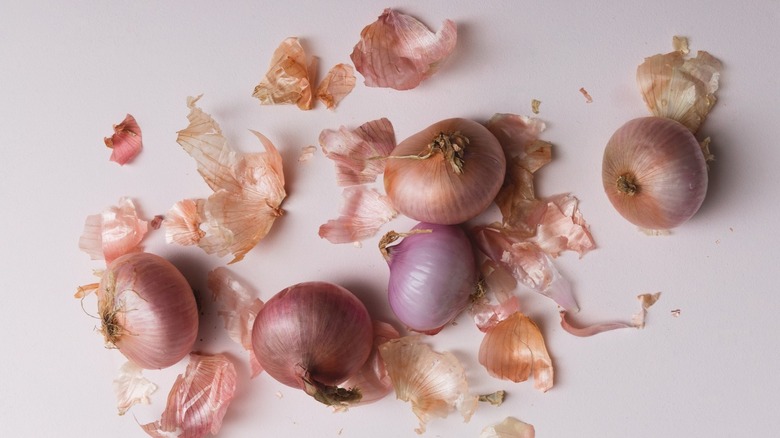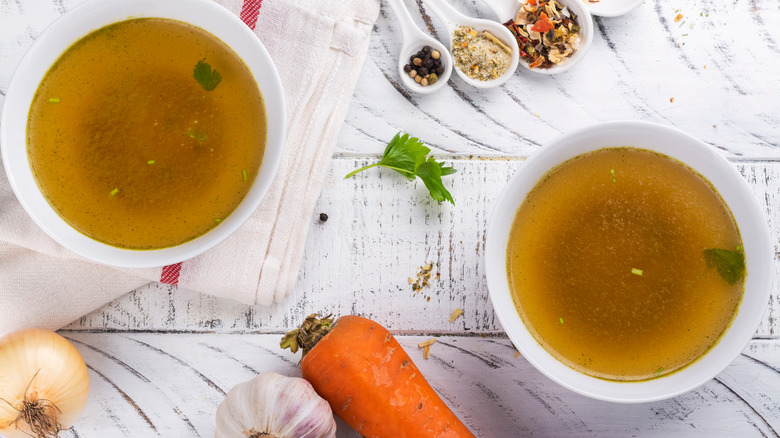Why You Shouldn't Throw Away Onion Peels
Even the most waste-conscious of home cooks may be overlooking the potential of onion peels. Often discarded without a second thought, a mere by-product that's removed while trying to reach the juicier and punchier layers of the allium, the peels are actually a culinary underdog. To start reaping their endless benefits, back away from the bin and refrain from throwing away any more onion skins — at least, not yet.
Take a page from the root-to-stem cooking handbook, you can give your less desirable produce scraps a second life. Yet, despite the fact that stems, stalks, and rinds might be easier to repurpose, onion skins can present a bit of a challenge due to their sturdy, yet paper-like texture. However, the Old Farmer's Almanac reports that it's within these unassuming peels that onions harbor loads of antioxidants such as quercetin, which has been shown to have anti-inflammatory and even antihistamine properties. But, that's not the only reason in favor of saving the skins.
When it comes down to it, saving onion peels not only makes sense from an environmental or health perspective but also from a financial standpoint. Extracting the most goodness that you can from your weekly produce haul is a smart way to fully get your money's worth out of ingredients. Although it might seem like an extreme way to pinch a few pennies, stay with us when we tell you that the skins can also be a delicious addition to all sorts of recipes.
Saving the skins means saving flavor
As long as you discard (or clean) any dirt-dusted layers, there is a place for onion peels in any number of dishes. A great way to creatively use vegetable scraps — the skins can work wonders to infuse rich and earthy flavors into an array of liquids. Best tossed into simmering stocks and soups, the peels can impart an insane degree of savory umami richness, especially in the case of vegetable-based broths. Plus, since they don't disintegrate, you can easily remove them once they've done all the heavy lifting.
Alternatively, you could also save the leftover skins from a steep and instead use them to make an "onion-less" onion powder. Simply pull excess moisture out of the peels by baking them in a dehydrator or low and slow in the oven, before pulverizing them in a food processor. Adding a touch of smoky flavor in an extremely approachable way, the powder can be used to season anything from proteins and vegetables to sauces and dressings that lack a wow factor.
Of course, once onion skins have finally served all possible purposes — remember that they can even be used as a natural food dye — make sure to throw them into your compost bin so that the peels can keep working their magic beyond your personal kitchen pursuits.

